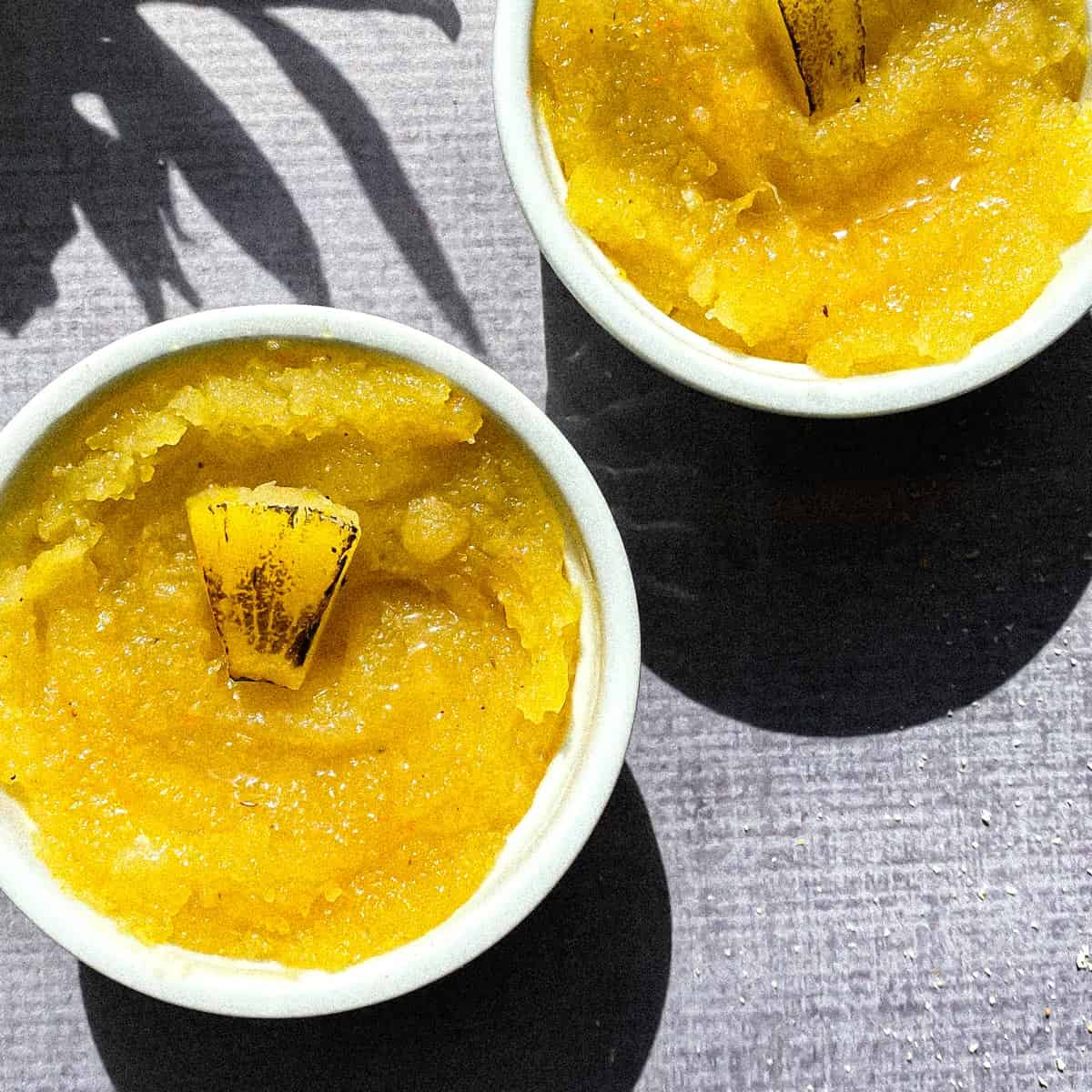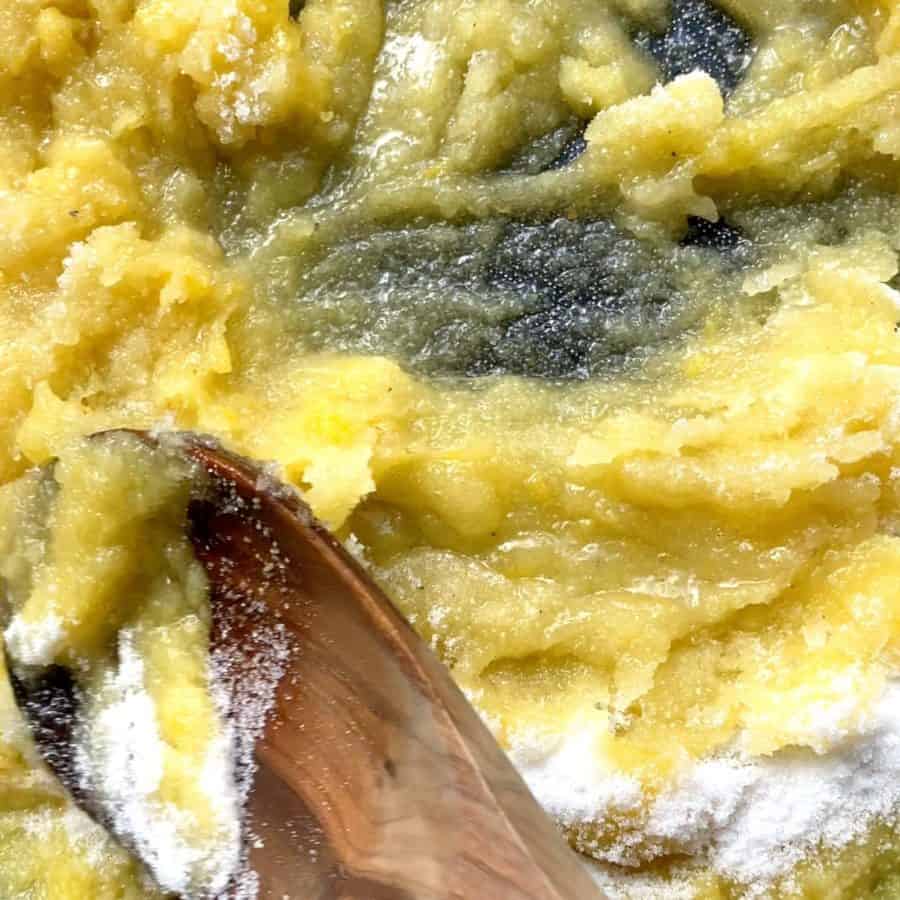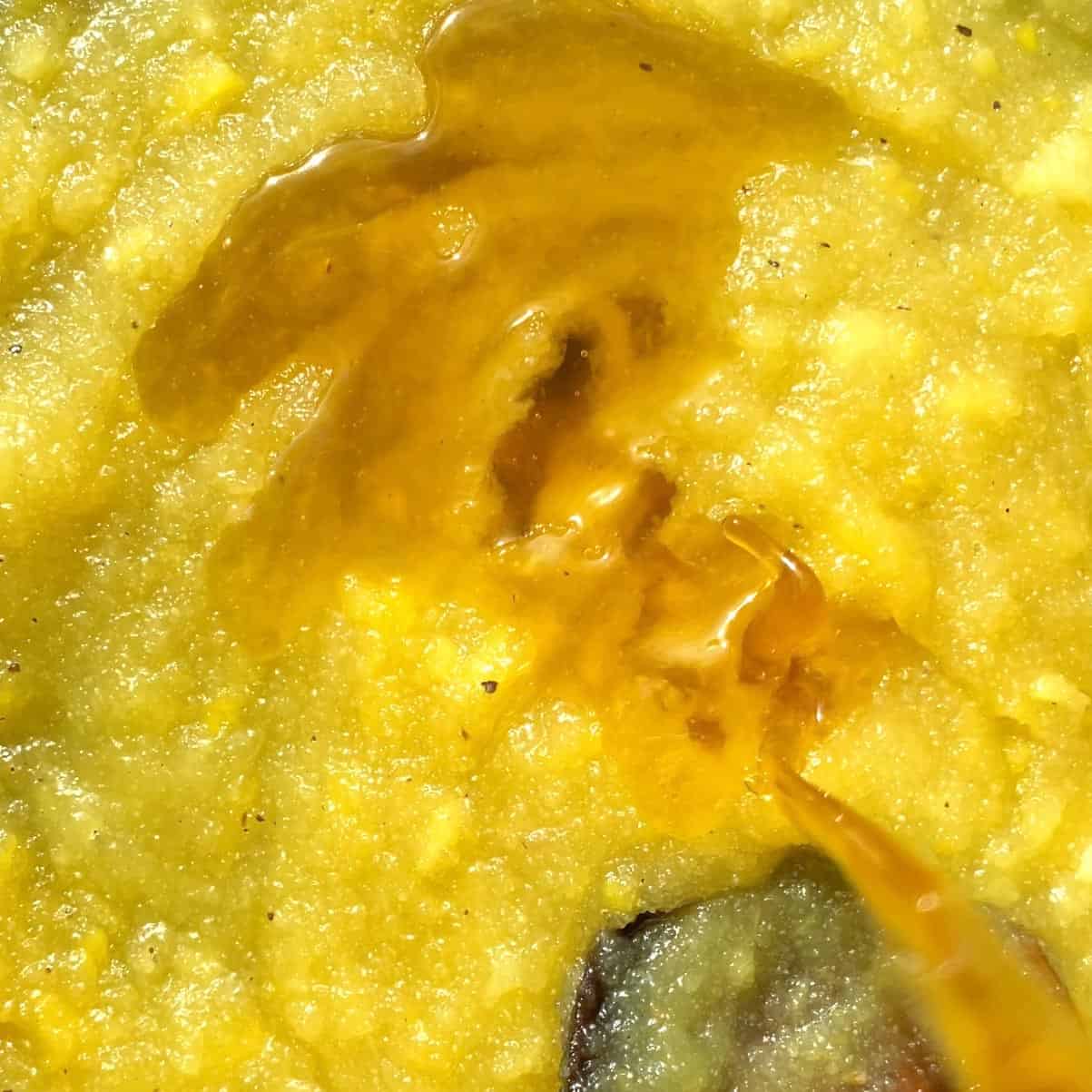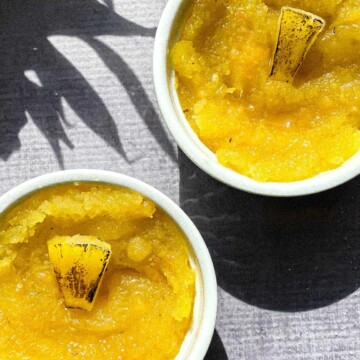Toasting the semolina
Kesari starts with coarse semolina, aka the grain that pasta is made of. The semolina is toasted in warm ghee to bring out its nutty flavors. At the end of this process, the little semolina granules will be all coated with a layer of butter-y ghee, at which point they will be set aside while a sweet sugar broth is prepped to imbue the semolina. Adding the roasted semolina in batches ensures that it doesn’t clump when added to the pineapple broth. In my recipe, I make a crushed pineapple and cardamom broth that I bring to a simmer before slowly lowering the toasted semolina into it. I love the slight tang of the pineapple which balances the richness of this dish. In a matter of minutes, the semolina absorbs the broth, turning it from a wet-sandy texture into a fluffy, mashed potato consistency.
Sugar gives kesari a marmalade texture
Sugar is then added to the semolina in batches. The granular sugar crystals slowly melt into their liquid form allowing them to be absorbed by the semolina and changing the kesari into a marmalade consistency.
Ghee keeps kesari moist for days
Adding ghee to the kesari will keep it moist and delicious for days. You can make the kesari ahead of time and store in the fridge. Reheat the kesari on the stove on low heat or in the microwave and serve warm. I love eating this pineapple kesari while it’s warm with pieces of charred pineapple placed on top for garnish. This dish is sweet from the sugar, floral from the cardamom, tangy from the pineapple, and buttery from the ghee. You don’t even have to chew, it just melts in your mouth.




